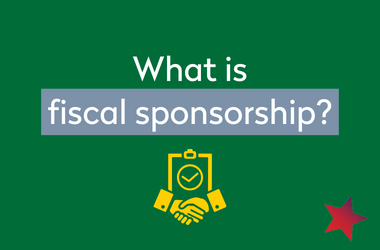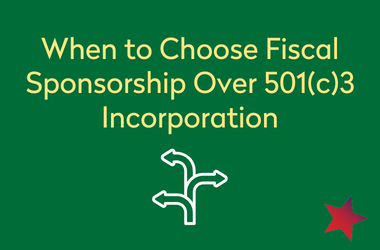History of Fiscal Sponsorship
Where does Fiscal Sponsorship in the United States Come From?
Fiscal sponsorship, the practice of one nonprofit organization providing administrative and financial support to another organization or project that lacks 501(c)(3) status, has a long and rich history in the United States.
The concept of fiscal sponsorship first emerged in the 1970s, as community-based organizations sought ways to pool resources and collaborate on projects. Initially, fiscal sponsorship was often an informal arrangement between organizations, with a fiscal sponsor providing financial support and oversight to a project without any legal or contractual agreement.
In the 1980s and 1990s, however, the practice of fiscal sponsorship became more formalized, with many nonprofits creating specific fiscal sponsorship programs and entering into written agreements with sponsored projects. This shift was driven in part by changes in the tax code, which made it more difficult for smaller organizations to obtain 501(c)(3) status on their own.
Today, fiscal sponsorship is an increasingly common practice, with many nonprofit organizations offering fiscal sponsorship services to emerging and established projects alike. These services typically include financial management, legal compliance, and administrative support, and can help organizations to access funding, build capacity, and achieve their mission more effectively.
Related Resources
What is Fiscal Sponsorship?
What is Fiscal Sponsorship? Definition of Fiscal Sponsorship in the Performing Arts Fiscal sponsorship is a relationship in which a nonprofit organization (the fiscal sponsor) agrees to accept and manage funds on behalf of another organization or individual project...
When to Choose Fiscal Sponsorship Over 501(c)3 Incorporation
When to Choose Fiscal Sponsorship Over 501(c)3 IncorporationIf you have a short-term or one-time project, or are just starting out as a creator, incorporating as a 501(c)(3) is not the most practical or cost-effective way to incorporate. Instead, fiscal sponsorship...
What Do I Need to Apply for Fiscal Sponsorship?
What Do I Need to Apply for Fiscal Sponsorship?The specific requirements for applying to different fiscal sponsorship programs will vary depending on the nonprofit that is offering fiscal sponsorship. There is no downside to contacting a prospective fiscal sponsor...



